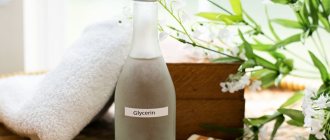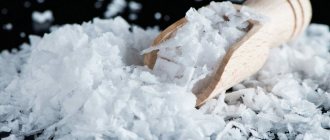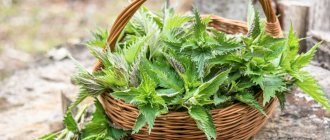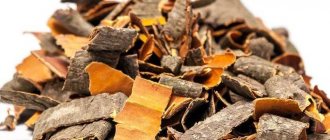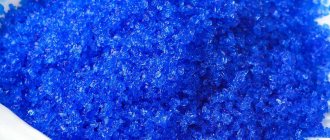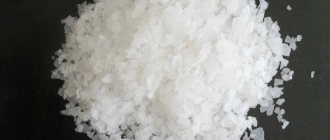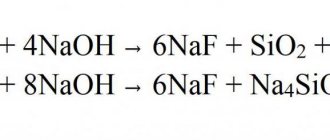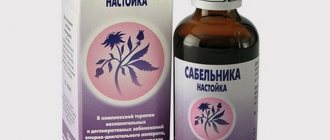Glycerin is a substance that is a colorless, syrupy liquid with a pleasant sweet taste. The substance is most widely used in the food industry: for example, you can find it in food products as a food additive under the index E422.
The food additive is introduced into products as a sweetener and a moisture level regulator. In addition, glycerin helps stabilize the liquid and fat in the medium. Glycerin is most often added to sweets.
The substance was first artificially synthesized 3 centuries ago. The substance was first used in the chemical and pharmaceutical industries; glycerin is also used to produce ordinary paper and explosives. After some time, experts found that glycerin has a positive effect on the skin - it makes the epidermis softer and more elastic, giving it a healthy glow. By the 80s of the last century, glycerin reached the peak of its popularity - it was at this time that it began to be used as a food additive E422. During work with the substance, more than 100 unique properties of the compound were discovered. Nowadays, glycerin is one of the most popular food additives, which can be found in almost every confectionery product. So, you can find glycerin in alcoholic and non-alcoholic drinks, cakes and pastries prepared with the addition of cream.
Glycerol molecule
What is glycerin? Formula
Glycerin is a completely organic compound that is obtained from vegetable fats. A little less often, animal fats are used to obtain the substance. For example, you can detect glycerin in lard.
The main property of glycerin that makes it popular in the food industry is its ability to dissolve almost any substance. It is worth noting that glycerin does not belong to the category of dangerous or harmful substances. All produced and imported glycerin must comply with GOST 6824–96.
Structural formula of glycerol C3H5(OH)3
The structural form of the substance consists of a chain represented by three carbon atoms, each of which, in turn, is connected to a hydrogen atom and a hydroxyl group. Glycerin formula:
C3H5(OH)3
Externally, glycerin is a colorless viscous liquid that resembles a sweet, thick syrup. The substance has no aroma at all.
Chemical properties of glycerin
Glycerin is one of the most prominent representatives of the group of trihydric alcohols. It is characterized by the same reactions as monohydric alcohols.
The reaction of glycerol occurs most clearly with the addition of active metals - sodium and potassium: these substances replace hydrogen in hydroxyl groups, and also take an active part in dehydration reactions, which culminate in the formation of an ester.
Glycerin is a component of a long list of naturally occurring esters. Dehydrated glycerin perfectly absorbs moisture, and when it comes into contact with the skin, it can relieve discomfort from burns. The additive is often used for the production of cosmetics and in the food industry.
The chemical properties of glycerol are similar to those found in polyhydric alcohols. When reacting with hydrogen halides or phosphorus halides, mono- and dihalohydrins are formed.
Pharmacokinetics and pharmacodynamics
In order to understand how a drug works, you need to know its pharmacokinetics and pharmacodynamics.
Once in the human body, glycerol molecules promote the transition of interstitial fluid into the vascular bed. Thanks to this action, based on the osmotic activity of the substance, the drug has found its use in the treatment of intracranial and intraocular pressure. The positive effect is achieved after 10 minutes, reaches its maximum after 60 minutes and lasts 5-6 hours.
When glycerol is applied to the skin, it exhibits the following properties:
- Moisturizing - due to the high hygroscopicity of glycerin.
- Protective – the ability to form a protective barrier on the skin.
- Exfoliating – glycerin cleanses the skin of dead cells.
- Hypoallergenic - drugs and cosmetics based on glycerin are practically not capable of causing an allergic reaction.
- Antipruritic and regenerating.
In addition, glycerol has an irritating effect on the mucous membranes of the body. Therefore, rectal suppositories containing glycerol are successfully used in the treatment of constipation. The laxative effect is observed after 15-30 minutes.
Adsorption through the mucous membrane is almost 100%. Metabolism occurs in the liver. Elimination of unchanged metabolites by the kidneys.
Physical properties of glycerin
The density of glycerol is 1.261 g/cm3, the molar mass of the substance is 92.1 g/mol, the temperature at which the compound begins to boil is 290 degrees.
Pure glycerin practically does not freeze, from this we can conclude that the ability of the substance in question to freeze is determined by its concentration. The simplest representative of the group of trihydric alcohols is a transparent liquid. It is often mixed with ordinary water in different proportions.
Glycerin has a rich sweet taste. When propylene glycol is added, the liquid becomes more fluid. When the temperature rises too high or when ignited, the substance begins to burn with a blue flame.
Chemical reactions with glycerin
Glycerin is obtained through the hydrolysis of fats; propylene is also used as a raw material. Glycerin was first obtained in 1779 by heating vegetable fat obtained from olive oil and adding lead oxide to it. The author of this method is considered to be the Swedish researcher Karl Scheele.
Glycerin is also obtained from acetone: when using this method, the substance is reduced with hydrogen to release isopropyl alcohol. At the next stage, a water molecule is split off using the dehydration method, which is then subjected to a chlorination procedure. The resulting substance is processed to obtain trichloropropane. At the final stage, the mixture is heated to carry out a hydration procedure, during which all chlorine molecules are replaced by hydroxyl groups.
Synthesis of glycerol by reduction of acetone:
CH2Cl-CHCl-CH2Cl + 3H2O → CH2OH-CHOH-CH2OH + 2HCl
When interacting with various catalysts, which can be acids, alkalis and enzymes, a fat saponification reaction occurs:
C3H5(OCOC17H35)3+3H2O → C3H5(OH)3 + 3C17H35COOH
Glycerin reacts with active metals to form salts - glycerates. Glycerates are similar to ethylene glycol and ethyl alcohol.
HO-CH2-CH2-OH + 2Na → H2↑+ NaO-CH2-CH2-ONa
When sodium hydroxide or any other active metal hydroxide is added, sodium glycerate and plain water are formed.
To obtain polyhydric alcohol, copper hydroxide is added to glycerin. As a result, copper glycerate and water are released.
C₃H₅(OH)₃ + Cu(OH)₂ → Cu(NH₂CH₂COO)₂ + H2O
Glycerol also undergoes polycondensation reactions, upon completion of which a mixture of polyglycerides is formed. To do this, the raw materials are heated to 300 degrees in a slightly alkaline environment.
Glycerol derivatives
Glycerides are derivatives of glycerol.
Glycerides, or acylglycerols as they are also called, are esters obtained by mixing glycerol esters and fatty acids.
There are 3 main types of glycerides:
- monoglycerides - one hydrogen atom is replaced in them;
- diglycerides - 2 hydrogen atoms are replaced in them;
- triglycerides - 3 hydrogen atoms are replaced in them.
Triglycerides predominate in fats of plant and animal origin. When exposed to natural enzymes, triglycerides are hydrolyzed to mono- and diglycerides.
Glycerin production
At the moment, there are many ways to produce glycerin on an industrial scale. The most popular of all methods is synthesis using propylene, which is extracted from petroleum cracking products.
Active production of glycerin began in the middle of the last century. Prior to this, chlorine was mainly used as the main raw material for the production of the substance in question. No byproducts were formed during the reaction, but the process itself was highly toxic.
In the modern world, chlorine as a raw material for the production of glycerin has given way to propylene.
In the USSR, it was practiced to obtain glycerin from propylene oxide and hydrogen peroxide. This technology was characterized by simplicity, as well as the absence of the need to create special conditions - increased pressure and temperature. With the development of industry and a deeper study of the characteristics of fatty acids, methods for producing glycerol have been improved.
The most widely used method is the breakdown of fats in autoclaves under a certain pressure in the presence of zinc, potassium or magnesium oxide (the pressure indicator is different for each compound). The whole process takes about 10-12 hours.
To obtain glycerol from fat, the Krebitz method is used. It involves treating fats with lime milk - it saponifies fats, resulting in the formation of calcium soap and glycerin.
Effects of glycerin on the body
Glycerin has been used for many years in both the food and cosmetic industries. Moreover, this is not some rare component that can only be found in specialized products - it is sufficient in ordinary food products and skin care cosmetics that you use every day. For many years, neither doctors nor ordinary people had any questions about the compound - by default it was considered completely safe for human health. Doubts about this arose when vaping liquids began to be produced based on glycerin. However, they use food grade glycerin, similar to what people consume in confectionery products, and this substance does absolutely no harm to human health. Glycerin can only be harmful if you smoke heavily, since the substance draws moisture from the mucous membranes, drying them out - this often causes dry mouth and cough.
As mentioned above, glycerin is widely used in the production of skin care cosmetics. The fact is that the substance can have a miraculous effect on the skin. The principle of action of glycerin is close to the principle of action of hyaluronic acid. These two substances are linked by increased hygroscopicity. Glycerin, like hyaluronic acid, saturates the upper layers of the skin with water and draws out excess air from them. In addition, it opens water pathways to the deeper layers of the skin. Thus, one molecule of glycerol is capable of attracting 10 molecules of water, increasing its volume at least twice. Glycerin forms a film on the skin that helps moisturize first the upper and then the lower layers of the skin.
It is worth noting that the compound has its own side effects - for example, glycerin can provoke the formation of irritation on sensitive skin.
In the food industry, glycerin is used to improve the taste of manufactured products. The substance also takes on the role of a thickener and sweetener. Glycerin does not belong to the category of toxic additives - it has absolutely no carcinogenic, mutagenic or other harmful effects on the human body. In the gastrointestinal tract, it is formed during the breakdown of fats that enter the body with food. It is worth noting that glycerin helps reduce intracranial pressure.
Contraindications
Polyhydric alcohol is not a particularly harmful chemical, but still, like any other drug, it has a number of contraindications.
They consist of the following restrictions on the use of glycerin, both in medicine and for cosmetic purposes:
- individual intolerance to the chemical, expressed in the form of allergic reactions (redness of the skin in the area where glycerin is applied, the appearance of a rash, itching);
- the presence of extensive wound formations, trophic ulcers (it is not recommended to apply glycerin directly to damaged areas of the epithelium, as this will cause severe pain and swelling);
- too oily skin;
- the use of glycerin in indoor conditions where dry and hot air predominates (in this case, the moisturizing effect is not achieved, but polyhydric alcohol draws water from the epithelial cells, harming human health).
Depending on the type of disease, as well as the condition of the skin, the doctor prescribing treatment may discover other factors that exclude the possibility of using glycerin for therapeutic purposes.
Useful properties of glycerin
Glycerin has a long list of beneficial properties. So, it has the following effects on the skin of the face and body:
- moisturizes and attracts moisture, makes the skin more elastic and fresh;
- protects the skin from the negative effects of ultraviolet radiation and other harmful environmental factors;
- cleanses the skin of dirt and toxins, normalizes metabolism, helps accelerate the regeneration process;
- removes pigment spots, makes scars on the surface of the skin less noticeable;
- helps heal cracks in elbows and heels;
- reduces the effects of allergies;
- rejuvenates, makes wrinkles less noticeable.
In addition, glycerin also benefits other systems of the human body. Thus, it normalizes metabolism and accelerates the process of fat breakdown.
Glycerin is often used as an excipient to treat a long list of dermatological diseases. Thus, the compound in question is included in drugs that are prescribed as part of complex therapy.
With regular use of products containing glycerin, the elasticity of the skin and its general condition improves. Thanks to glycerin, the epidermis retains moisture longer.
Summary
Glycerin can be used for many purposes. You learned this from the review above. It is inexpensive and quite accessible, helps maintain skin condition as part of cosmetic products.
Will delight the kids with soap bubbles. Glycerin will improve the shine of your car and help in removing stains from clothes, cleaning furniture and cleaning the house.
If the article was useful to you, share your impressions in the comments.
Regards, Alexey.
Harm of glycerin and contraindications to its use
Glycerin is not toxic, but under certain conditions it can cause allergic reactions. Because of this, drugs containing large amounts of glycerin are recommended to be introduced into your diet gradually, carefully monitoring your body’s reaction. Experts recommend starting prem with a small amount of glycerin diluted with a large volume of water.
If you have an individual intolerance or consume too much glycerin, you may experience mild dizziness, headaches, vomiting, nausea and thirst. The fact is that glycerin is not absorbed in large quantities, so it can lead to diarrhea and bloating.
Glycerin can have negative effects on the body with prolonged use. So, in the case of prolonged use of glycerin, sensitive skin becomes inflamed and melanin is washed out of the epidermis.
It is strictly not recommended to mix glycerin with silicone - otherwise a toxic substance will be formed.
There is a common belief that glycerin does not moisturize, but rather dries out the skin. This is indeed possible, but only if you are constantly exposed to very dry air conditions (relative humidity below 65%). Therefore, experts recommend not to abuse glycerin in winter.
To prevent negative consequences, it is important to monitor the characteristics of the cream used: cosmetics with a large amount of glycerin are best used in the hot season, but in winter, give preference to cosmetics that contain less of it.
There is no information about the effect of glycerin on pregnant and lactating women, and there are no contraindications. But experts recommend limiting the consumption of the substance during pregnancy.
It is necessary to take medications with glycerin only according to the instructions included with the medicine. Some medications must be shaken before use. If you use skincare products with glycerin, use it only after first cleansing your skin. It is important to ensure that medications and skincare products do not come into contact with the eyes, mouth and nose.
special instructions
There are no direct medical contraindications, but the drug should still be used with caution by people with the following pathologies:
- diabetes mellitus, when the blood glucose level can rise to a level above 8 mmol, and the patient receives replacement therapy with insulin injections;
- liver cirrhosis caused by intoxication with chemicals, prolonged consumption of alcoholic beverages, hepatitis, tumor processes;
- chronic renal failure (regardless of the cause that provoked the pathological condition of the organ).
Despite the fact that glycerin is a polyhydric alcohol, its use as a medicine does not entail a decrease in reaction or concentration. Therefore, the drug is approved for the treatment of vehicle drivers, as well as machine and equipment operators.
Instructions for use of glycerin
Glycerin suppositories
To eliminate constipation, it is recommended to use suppositories with glycerin: they are inserted into the rectum once a day and removed after 15-20 minutes. It is recommended to use candles immediately after your morning meal. The use of suppositories should be stopped immediately after intestinal motility normalizes. The dosage for children must be reduced.
Liquid glycerin
Liquid glycerin is also used to normalize intestinal function. It is used as one of the components of microenemas, or drunk as a medicinal syrup. The volume of the drug is determined depending on body weight; it is recommended to use no more than 3 milliliters of solution per 1.5 grams of pure drug.
Overdose
An overdose of glycerin is manifested by severe dizziness, impaired consciousness, increased dryness in the mouth and a sharp increase in the feeling of thirst.
Peculiarities
The medical drug “Glycerol” (solution or suppositories) is often recommended by health care workers, since it has a good effect and is practically safe when used correctly. However, before use, it is recommended to consult a specialist to avoid unwanted consequences.
Due to the mild effect of glycerin, the drug is also used in the treatment of small patients. The adult and children's analogues differ in that in the first case the capsule contains one gram of the active substance, and "Glycerol" for children - 0.75 g. Depending on the age of the child and the characteristics of the course of the disease, the dosage can be adjusted by the attending physician
During pregnancy, the drug should be used with caution, following the instructions for use and the advice of a gynecologist or treating specialist.
Precautions when consuming glycerin
There are two most important rules for using glycerin - do not overdo it with its volume and do not use it if there is one of the contraindications.
Thus, experts strongly do not recommend using drugs with glycerin in the following cases:
- for hemorrhoids and fissures (for suppositories);
- in the presence of active inflammatory processes;
- with bleeding;
- with diarrhea;
- for diabetes mellitus;
- when diagnosing kidney, liver and heart diseases.
If you feel unwell, you should stop taking glycerin.
Glycerin for children
It is recommended to give special small suppositories to children under 6 years of age - 1 suppository weighing from 1.5 to 1.69 grams.
Glycerin for newborns
Infants can be given medications with glycerin starting from 3 months of age. It is important to use special candles.
It is worth noting that the product is not addictive and does absolutely no harm to the body.
Bubble
For little children, soap bubbles are a great joy. You can learn to make them yourself at home.
To do this you need glycerin, a few ingredients and desire.
The presence of glycerin in the solution for soap bubbles is due to its “fixing” effect. The walls of the soap bubble are strengthened and it flies for a long time without bursting.
At the glycerol level, the fixing properties are inherent in sugar syrup and gelatin. Soap experts say you can use ammonia detergent or polyvinyl alcohol. The basis of many recipes is the “Fairy” remedy; it has been tested in practice.
It should be warned that you should not overdo it with glycerin. The bubbles may turn out to be too strong and will have difficulty inflating.
Tips for preparing a solution for soap bubbles:
1. The basis is soft water. Boiled or distilled is recommended.
2. It should be warm or hot.
3. Since the bubbles are made for children, safe ingredients should be used, such as baby shampoo.
4. The solution should be stirred so that there is less foam. This is a very important point in properly preparing the mixture.
5. At the end of cooking, the mixture should be infused.
| Distilled water | Soap base | Glycerol | Sugar | Gelatin | Baking powder | |
| Soap mixture with sugar | 12 | 2 | 1 | 1 | — | 0,2 |
| Sugar free soap mixture | 6 | 2 | 1 | — | — | — |
| Giant bubbles | 8 | 2 | 1,5 | 0,5 | 0,5 | — |
The table shows three recipes with different ingredients for making a mixture of soap bubbles.
How to make soap bubbles
Application of glycerin
The substance in question is popular in the following areas:
- food industry;
- tobacco production;
- fillers for electronic cigarettes;
- pharmaceuticals;
- production of care cosmetics;
- production of detergents;
- Agriculture;
- textile industry;
- paper industry;
- leather industry;
- production of plastic products;
- paint and varnish industry;
- electrical engineering and radio engineering.
Glycerin in the food industry
In the food industry, glycerin is known under the index E422. The food additive can be found in confectionery products - where glycerin is responsible for improving the consistency, it also prevents chocolate from sagging and increases the volume of baked goods.
Glycerin also makes pasta less sticky during cooking, improves storage of finished products and prevents starch from sticking.
The compound in question is widely used in the production of extracts of coffee, tea, ginger and other products. You can find the additive in soft drinks – it is responsible for the softness of the taste.
Glycerin in the tobacco industry
Glycerin is added to smoking mixtures to keep the leaves moist longer. The substance also eliminates unpleasant taste.
Glycerin in e-liquid
Glycerin is used in e-liquids to ensure a sufficient level of hygroscopicity.
Glycerin in the pharmaceutical industry
In medicine, glycerin is used to increase the solubility of drugs and increase their viscosity. Glycerin can be found in ointments, pastes and creams.
Glycerin in agriculture
In agriculture, glycerin is used to treat crops to increase yield. Glycerin can also protect trees from pests.
Glycerin in the textile industry
In the textile industry, the substance is used to impart softness to fabrics; it also fixes paint on materials.
Glycerin in cosmetology
The substance is often included in creams and masks - it is responsible for the condition of the skin: it makes it softer and more elastic, nourishes it with moisture, penetrating first into the upper and then into the deeper layers of the skin.
The use of glycerin in cosmetology
It is easy to prepare inexpensive and effective cosmetics based on glycerin. There are many recipes using available ingredients. So everyone can find a suitable option for themselves.
Recipes for face masks with glycerin
Nutritious
The composition includes glycerin and vegetable oil (coconut, jojoba, olive). The components are mixed in equal proportions. The product is used in the evening. Distribute evenly over the face, avoiding the area around the eyes, and leave overnight. There is no need to wash off the mask.
Refreshing
To prepare, combine the following components:
- 10 g glycerin;
- medium-sized chicken egg;
- 200 ml cream 20% fat;
- 100 ml vodka;
- juice of one lemon.
The mask should be kept for 20 minutes, then removed with a cotton pad, periodically moistening it with warm water.
Moisturizing
The mixture consists of glycerin, pure water, honey, crushed oatmeal. For one-time use, use a teaspoon of each component. Exposure time is 15 minutes. To remove, use boiled water at room temperature.
Whitening
To prepare, you need to beat 100 g of liquid honey, 10 g of glycerin, and the juice of one lemon into a homogeneous mass. In the resulting mixture, moisten a gauze napkin with slits for the nose, eyes, mouth and carefully cover the face. Leave to act for 15 minutes, rinse with warm water. The course consists of 20 procedures, with a frequency of 3-4 days.
Vitamin
Glycerin (1 tsp) is mixed with clean water (2 tsp), add 1-2 drops of vitamin A and E. The mask lasts half an hour, it should be applied using a cotton pad. The remaining product is blotted with a paper napkin; there is no need to rinse with water. It is recommended to use 1-2 times a week for a month.
Herbal
Decoctions of medicinal herbs will help to enhance the effect of the mask: chamomile, sage, mint, etc. at the rate of 1 tbsp. l. for 200 ml of water. The herb is brewed according to the instructions, and after cooling it is used to dilute glycerin in a ratio of 1 to 2. If desired, you can add additional components: natural honey, aloe juice, clay. The mask lasts 20-30 minutes.
Recipes for hair masks with glycerin
Anti-fat
To prepare you will need:
- whites from two eggs;
- alcohol (alcohol, cognac, vodka) - 2 tbsp. l.;
- glycerin - 2 tbsp. l.
Beat the egg whites with a whisk, combine with the rest of the ingredients, distribute over damp hair, not forgetting to rub into the scalp. After 25 minutes, rinse with warm water.
Drop protection
Mix burdock oil and glycerin in equal quantities. Rub the composition into the scalp, then distribute over the entire length, rinse after 30 minutes using shampoo.
If you add a pinch of powdered cinnamon, the effect of the mask is enhanced.
To combat split ends
Combine half a tablespoon of natural vinegar, an yolk, a teaspoon of glycerin, 2 tbsp. l. castor oil, preheated in a water bath. Apply the mixture to your hair, paying special attention to the ends. Put on a plastic cap, cover with a towel, leave for 40 minutes, rinse with warm water.
Where to buy, how much it costs
You can purchase glycerin for cosmetic purposes at a pharmacy or online store. The product is packaged in 100 ml plastic or glass containers. Its cost varies between 11-35 rubles.
Ammonia + Glycerol + Ethanol
This is a 3-component preparation, an alcohol solution for external use. The medicine is used to eliminate dry skin on the hands. The medication has antiseptic and anti-inflammatory properties. Thanks to the substances included in the composition, especially glycerin, the drug improves skin elasticity.
The medicine is only allowed for use by adults. It is contraindicated for children. The liquid is rubbed into the skin of the hands 2-3 times a day until dryness is eliminated. Some people may have an allergic reaction to the components of the substance. In this case, use of the medicine should be stopped.
